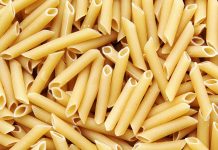 Production technologies
Production technologies
Breakfast cereals can be produced with traditional processes that is by steaming the grains or kernels. New techniques are also used that result in products with similar or better characteristics than traditional ones, utilizing modern systems that offer greater flexibility and consume less energy. Among these are the extruded cereals, puffed cereals and shredded cereals. The final product is, obviously, the result of extensive research on the raw materials and processing, with a focus also on the optimization of waste and the reduction of time. The market for breakfast cereals primarily includes products based on corn, grain, and rice. The initial phases of the traditional process consist of steam cooking the grains inside a rotating cooker where already-cleaned cereals are placed along with a solution of sugar, millet extract, salt and water. The mass is first preheated in order to facilitate the absorption of the solution by the kernel. Then it is steamed. The amount of time required for this step varies based upon the raw material and is completed when the grains are no longer hard and chalky but rather soft and translucid. Then the cooked mass is cooled by fans inside the cooker and poured out onto a conveyor belt that transports it through a “delumper” which separates the lumps into single grits. The next steps are drying, flaking and toasting.The first involves a thermal treatment at temperatures under 120°C and is aimed at eliminating enough dampness in order to make the external layer of the grit rigid so that the mass does not become mushy during the flaking process. The second step involves pressing the grit (after a quick cooling to room temperature) through two big rolling presses. This gives the grit its flake shape. Finally, toasting is the step where the excess water content is eliminated with temperatures ranging from 280°C to 320°C. Now, as an alternative to traditional production, cereals are produced with extrusion technology. In this case, the thermal treatment is no longer applied to the entire grit, but to the flour (generally a mix). Other than the classic flake, breakfast cereals can have variable shapes and sizes (rice kernels, balls, etc.). The use of extrusion (widely utilized in chemical and petrochemical industries) on food products was not an easy task. It involved an extensive amount of research into the rheological behaviours of the mix of solid elements (flours, sugar, cocoa, salt, vitamins and other additives in powder form) and liquids (various syrups water, honey, and other fluid ingredients) during the treatment. Nonetheless, once that the laws of physics and chemistry underlying the process were understood, the use of extrusion has led to reducing operating costs due to the higher level of energy efficiency. Furthermore, it has been possible to combine the cooking, mixing, and separation steps, resulting in a simplified production process and guaranteeing a product with more uniform characteristics and reduced waste. Inside the extrusion system, processing takes place under high pressure and temperature conditions, in order to gelatinze the starch and denature the protein. During hydrolysis, the starch loses its crystalline structure and takes on the characteristics of a gel. This transformation breaks down the molecules, making them more digestible. The higher the level of gelatinization, the easier the starch can be transformed into glucose by the alpha amylase enzymes, causing the glycemic index to increase. Researchers, in response to consumer market needs for a healthy and balanced diet, have eliminated this problem by putting flours made from non-traditional cereals into the base mixture, such as amaranth, rye, millet, etc, which offer higher fibre, and limit the hydrolysis of the starch, reducing the glycemic index. With the addition of these flours, the product also maintains an expansion factor similar to the original. As to proteins, even their denaturation has a positive effect on the digestibility since it increases the food’s sensibility to digestive enzymes.  The role of the formation of gluten is also important because this provides elasticity and plasticity to the final product. The extrusion process is extremely useful even in the production of gluten-free foods which are highly requested on the market. In fact, it is possible to obtain breakfast cereals similar to those from classic flours by exploiting the increase in cohesion and elasticity of the mix due to the pre-gelatinization of starch. Extrusion also causes the degradation of the phytates, natural elements that are present in cereals (especially bran) that limit the availability of essential minerals like calcium and zinc and the total or partial inactivation of other anti-nutritional factors. The high processing temperatures also sanitize the food during processing. At the exit of the extrusion system, there is usually a screen with a mesh that varies in size and shapes, and a cutter that is also used to model the grit. In the case of flakes, the subsequent steps of the process are almost identical to the traditional method (varying only in time and thermal treatment temperatures). Cereals of other shapes, on the other hand, go directly from the first drying step to toasting. Another cereal production technique is used for puffed cereals. The process starts directly with the grain (mainly rice but now with new production methods, other grains are possible) or from extruded grit. In both cases the raw material is inserted into a hermetically sealed chamber inside either a single or multiple-shotgun machine. The system is heated and vapour is introduced into the machine in order to increase the pressure to a pre-defined level. When the chamber is then opened, a sudden drop in pressure occurs and this causes the puffing of the cereal. A production line like this can be accompanied with coating machines and other systems to produce vitamin and mineral enriched cereals, and chocolate or honey coated cereals. Another category of breakfast cereals is the shredded types, which are bars that are produced from the grain. Today extrusion is used for producing shredded cereals. The grain, pre-cooked and partially dried, or the extruded mass, is conveyed through rollers, one with a smooth surface and the other grooved. The result is a lattice of ground cereals that is then placed on a conveyor belt and sent through a cutting system that divides the lattice and presses is into a single layer. The bars formed like this are then baked in an oven. This type of product can also be filled with nuts, dried fruit, chocolate or marmalade. The realm of breakfast cereals has evolved over the years from a simple product made from raw material and traditional processes, to a multitude of healthy and tasty variants, which have been the result of research and technological advances.
The role of the formation of gluten is also important because this provides elasticity and plasticity to the final product. The extrusion process is extremely useful even in the production of gluten-free foods which are highly requested on the market. In fact, it is possible to obtain breakfast cereals similar to those from classic flours by exploiting the increase in cohesion and elasticity of the mix due to the pre-gelatinization of starch. Extrusion also causes the degradation of the phytates, natural elements that are present in cereals (especially bran) that limit the availability of essential minerals like calcium and zinc and the total or partial inactivation of other anti-nutritional factors. The high processing temperatures also sanitize the food during processing. At the exit of the extrusion system, there is usually a screen with a mesh that varies in size and shapes, and a cutter that is also used to model the grit. In the case of flakes, the subsequent steps of the process are almost identical to the traditional method (varying only in time and thermal treatment temperatures). Cereals of other shapes, on the other hand, go directly from the first drying step to toasting. Another cereal production technique is used for puffed cereals. The process starts directly with the grain (mainly rice but now with new production methods, other grains are possible) or from extruded grit. In both cases the raw material is inserted into a hermetically sealed chamber inside either a single or multiple-shotgun machine. The system is heated and vapour is introduced into the machine in order to increase the pressure to a pre-defined level. When the chamber is then opened, a sudden drop in pressure occurs and this causes the puffing of the cereal. A production line like this can be accompanied with coating machines and other systems to produce vitamin and mineral enriched cereals, and chocolate or honey coated cereals. Another category of breakfast cereals is the shredded types, which are bars that are produced from the grain. Today extrusion is used for producing shredded cereals. The grain, pre-cooked and partially dried, or the extruded mass, is conveyed through rollers, one with a smooth surface and the other grooved. The result is a lattice of ground cereals that is then placed on a conveyor belt and sent through a cutting system that divides the lattice and presses is into a single layer. The bars formed like this are then baked in an oven. This type of product can also be filled with nuts, dried fruit, chocolate or marmalade. The realm of breakfast cereals has evolved over the years from a simple product made from raw material and traditional processes, to a multitude of healthy and tasty variants, which have been the result of research and technological advances.
Bibliography
• Varacca A., Sckokai P., Differenziazione del prodotto e competizione tra marche nel mercato dei cereali da colazione. Agriregionieuropa anno 8 n°31, Dic. 2012
• Fast R.B., Manufacturing Technology Of Ready-To-Eat Cereals, in Breakfast Cereals And How They Are Made, Fast R.B. and Caldwell E.F., Editors. American Association of Cereal Chemists, Inc., 1990
• Chiang B.Y., Johnson J.A., Gelatinization of starch in extruded products, Cereal Chemistry, 54(3): 436-443
by Massimiliano Binaschi, Roberta Dordoni
Institute of Oenology and Agri-food Engineering, Università Cattolica del Sacro Cuore, Piacenza



